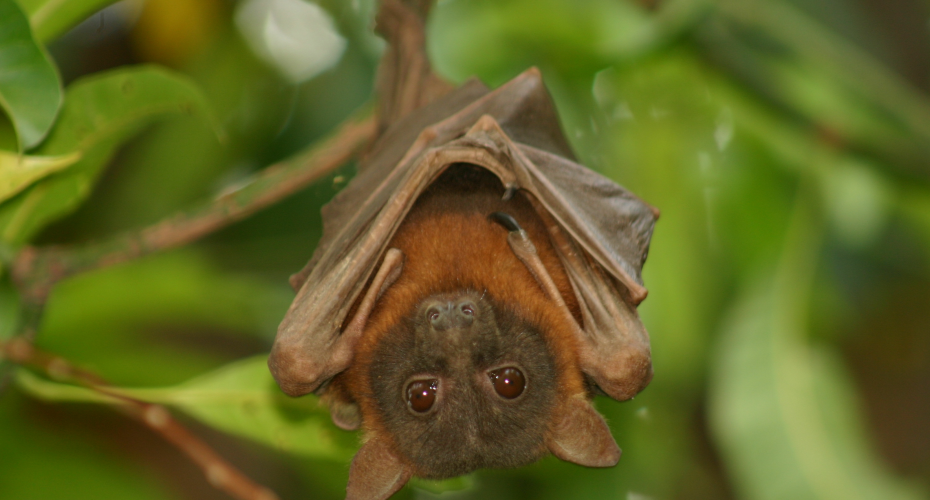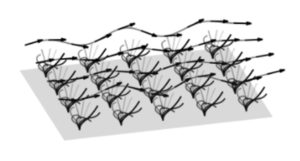Protect habitat to prevent pandemics

Image by Raina Plowright
An international research team has proposed using ecological perspectives to prevent the occurrence of disease outbreaks.
Pandemics begin when disease-harboring animals, such as bats, come in close proximity with people, livestock or other animals and pass on new pathogens. Viruses such as SARS-CoV-2, SARS-CoV-1, Nipah, Hendra and possibly Ebola have all fatally spilled over from bats to humans, sometimes through an intermediate host.
Led by Cornell University expert, Professor Raina Plowright, the international team has proposed a roadmap for how to prevent the next pandemic by conserving natural areas and promoting biodiversity, thereby providing animals with enough food, safe havens and distance to limit contact and transfer of pathogens to humans.
Professor Plowright said: “The world is focused on how can we detect and then contain a novel pathogen once it is circulating in humans, rather than how can we prevent that pathogen from entering the human population in the first place.”
The roadmap uses insights from recently published case studies to explain the mechanisms linking environmental change and spillover of pathogens from animals to humans and identifies ecological interventions to disrupt these links and policy frameworks to implement them.
Dr Orly Razgour, Co-author and Senior Lecturer in Ecology at the University of Exeter, said: “To prevent the next pandemic we need to protect and restore natural habitats to support healthy populations of wildlife that hosts pathogens and to work with human communities most at risk. Such ecological interventions to protect where animals forage, protect where animals rest and protect people at risk can simultaneously address drivers of disease spillover and biodiversity loss.”
Land-use changes are a prominent driver for pathogen spillover into people from wildlife, through human behaviors that put people in closer contact with animals. For example, when humans build roads into previously intact natural areas it increases opportunities for human exposure with wildlife species. With deeper access to natural areas, wildlife trade increases, new industries such as bat guano mining in caves open up and new communities may hunt more, often in order to subsist. People have contracted disease from butchering bats or eating fruit contaminated with bat saliva.
Professor Plowright said: “Without intact habitat, animals become stressed and shed more virus, and they move in search of food towards agricultural and urban areas, overlapping more with people. Many experts believe the next pandemic will come from a new pathogen that has yet to infect people, so we need to make sure there’s always an abundant supply of food available at all times of year, especially when animals are in stressful life history stages like reproduction and migration.”
The authors also stress the importance of protecting sites where animals may roost or aggregate, as tens of thousands of bats can roost in canopies and caves, so when these areas are disturbed, these populations can splinter, move and shed more virus. Also, cave dwelling bats may not have other caves to move to, in which case they stay put, become more stressed and likely shed more virus. Protecting lands that act as buffers between people and wildlife is also key.
The study’s authors emphasize the need for an international agency or panel that can assess and synthesize data on pandemic prevention, preparedness and response and collect metrics on intactness of landscapes, ecological integrity and biodiversity.
Co-authors hail from the London School of Hygiene and Tropical Medicine, University of Oxford, University of Exeter, Muni University in Uganda, Bat Conservation International, Kerala Agricultural University in India, the American Museum of Natural History, the University of Benin in Nigeria, Conservation International and many more.
The paper was funded by the Cornell Center for Pandemic Prevention, Preparedness and Response, the National Science Foundation, the Defense Advanced Research Projects Agency, the National Institutes of Health, the Montpellier Advanced Knowledge Institute on Transitions and the National Environment Research Council.
The paper, published in Nature Communications, is entitled “Ecological Countermeasures to Prevent Pathogen Spillover and Subsequent Pandemics.”



